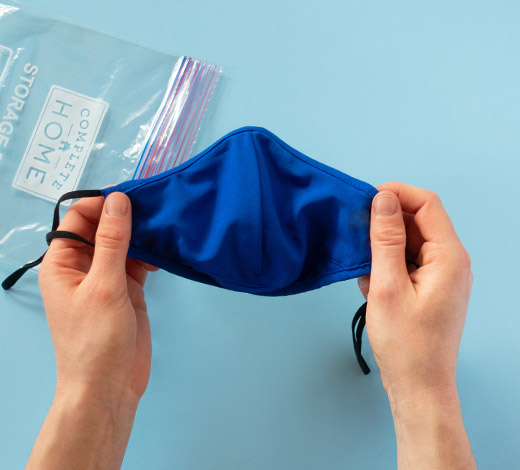Both croup and whooping cough can start off like a cold with symptoms of runny nose, cough, fever, red, watery eyes and nasal congestion for the first seven to ten days.
As symptoms worsen, both whooping cough and croup affect the respiratory system with inflammation and drainage causing coughing. The Centers for Disease Control and Prevention reports a recent peak in whooping cough since 2012 with 48,277 cases in that year. Croup affects approximately 3% of children per year.
There are a few distinctive ways you can tell the difference between croup and whooping cough.
What is croup?
Croup is characterized by inflammation of the vocal cords and the trachea, leading to difficult breathing, a hoarse throat and a barking cough occurring after one or two days of cold symptoms. In addition to the cough, breathing can be high-pitched and noisy, especially at night. Croup is usually caused by a virus—75% of croup cases are caused by the parainfluenza virus—and it tends to be more common in the fall and winter.
Children aged six months to three years have the highest risk for croup, and the risk increases if you have a family history of croup. You may see rapid, labored, shallow breathing with a child’s nostrils flaring, and you may see their ribs each time they take a breath. Many cases of croup can be managed at home with pain medications and cool or warm mist to loosen secretions.
The severity of croup is described as:
- Mild: A barking cough without stridor (high-pitched wheezing sound where airflow is disrupted by vocal cords and trachea blockages)
- Moderate: Stridor at rest, mild retractions of the chest when breathing and symptoms of respiratory distress
- Severe: Significant stridor at rest, severe chest retractions, agitation, fatigue and paleness
See your child’s care provider if they have signs of respiratory distress with decreased or absent breath sounds, lips that are a bluish color, or decreased alertness.
What is whooping cough?
Pertussis (whooping cough) is known for the “whooping” sound made when someone gasps for air after a coughing fit. This respiratory tract infection is highly contagious and occurs in the trachea as well as the lungs. It has been called the “100-day cough” as the infection can last over 10 weeks.
Whooping cough is divided into three stages:
- Catarrhal stage: Symptoms are similar to a viral respiratory infection with a mild, occasional cough, low-grade fever, and runny nose lasting one to two weeks.
- Paroxysmal stage: Coughing increases in severity with a long series of coughs causing gagging or vomiting and struggling for breath, resulting in cyanosis (blue-colored skin from inadequate oxygenation of the blood.) The symptoms of a whooping noise after a coughing attack may not always occur. This stage lasts two to eight weeks.
- Convalescent stage: The cough slowly subsides with episodes of coughing recurring or worsening over several weeks to months. A study reports the median duration of cough in children was 112 days with a range of 38–191 days.
If a baby under one year gets whooping cough, about 50% will require hospitalization. If not treated, whooping cough can lead to pneumonia, seizure, brain damage and death. Antibiotics are the usual treatment to control symptoms and prevent the spread of disease.
Croup vs. whooping cough
This chart shows some of the differences between croup and whooping cough:
| Disease | Cause | Cough | Contagious | Length |
|---|---|---|---|---|
| Croup | Virus, mostly | Barking cough and hoarse throat | 3 days into illness or when fever is gone | 2 days or up to 1 week |
| Whooping Cough | Bacteria | Coughing fit with a gasp for air making “whoop” sound | Up to 2 weeks after cough begins and after 5 days into antibiotics | 100 days or up to 10 weeks |
How do vaccinations help?
Vaccines protect communities by preventing the spread of disease. There is no vaccination for croup since it is caused by a virus, but there is a vaccination for whooping cough. Before vaccines were available in the 1940s, about 200,000 children contracted whooping cough and 9,000 children died. Now there are about 10,000–40,000 cases and 20 deaths per year due to whooping cough. If people stop getting vaccinated, a rapid rise of specific diseases could cause thousands to get sick and die.
Children under age 10 years were predominately affected by whooping cough before vaccines were available. Now over 50% of whooping cough cases are in unvaccinated adolescents and adults who are passing the infection on to unvaccinated infants and children. Parents should make sure older adults coming into contact with their infants have been vaccinated for whooping cough.
There are two vaccines available that protect against whooping cough: the DTaP vaccine and the Tdap vaccine. The DTaP vaccine protects babies and younger children, and the Tdap vaccine protects preteens, teens and adults, including pregnant women. Getting the vaccine during pregnancy helps protect unborn babies from whooping cough until they’re old enough to receive the DTaP vaccine at two months.
Beyond vaccination, there are two basic things everyone in the family can do to prevent the spread of either croup or whooping cough: wash your hands using soap and water or alcohol-based rubs after touching nasal secretions, and cover your nose and mouth when coughing or sneezing.
Published on August 17, 2019
Sources:
Baiu, I, and E Melendea. 2019. MedlinePlus: Croup. 04 23. Accessed 2019. https://vsearch.nlm.nih.gov/vivisimo/cgi-bin/query-meta?v%3Aproject=medlineplus&v%3Asources=medlineplus-bundle&query=croup&_ga=2.4304375.577146143.1563997714-1265257660.1563997714.
Cornia, P, and BA Lipsky. 2018. UpToDate: Pertussis infection in adolescents and adults: Treatment and prevention. 11 27. Accessed 07 25, 2019. https://www.uptodate.com/contents/pertussis-infection-in-adolescents-and-adults-treatment-and-prevention?search=whooping&source=search_result&selectedTitle=1~150&usage_type=default&display_rank=1.
Johnson, DW. 2009. “Croup.” BMJ Clin Evid. https://www.ncbi.nlm.nih.gov/pmc/articles/PMC2907784/.
Mayo Clinic Staff. 2018. Mayo Whooping Cough symptoms & causes. 02 10. Accessed 2019. https://www.mayoclinic.org/diseases-conditions/whooping-cough/symptoms-causes/syc-20378973.
Nat Ctr for Immunization and Resp Disease, Div of Bacterial Disease. 2019. CDC Pertusis (Whooping Cough): Pertussis Frequently Asked Questions. 04 01. Accessed 07 26, 2019. https://www.cdc.gov/pertussis/about/faqs.html.
Nat Ctr for Immunization and Resp Diseases, Div of Bacterial Diseases. 2019. CDC: Whooping Cough Vaccination. 01 15. Accessed 2019. https://www.cdc.gov/pertussis/vaccines.html.
Nat Ctr for Immunization and Resp Diseases, Divi of Bacterial Diseases. 2017. CDC— Pertussis (Whooping Cough) Fast Facts. 08 07. Accessed 2019. https://www.cdc.gov/pertussis/fast-facts.html.
CDC: Pertussis (Whooping Cough) Clinical Features. 08 07. Accessed 07 25, 2019. https://www.cdc.gov/pertussis/clinical/features.html.
Woods, CR. 2018. Croup: Clinical features, evaluation, and diagnosis. 06 15. Accessed 07 25, 2019. https://www.uptodate.com/contents/croup-clinical-features-evaluation-and-diagnosis?search=croup&source=search_result&selectedTitle=2~71&usage_type=default&display_rank=2.
Yeh, S, and C Mink. 2019. Pertussis infection in infants and children: Clinical features and diagnsis. 02 19. Accessed 07 25, 2019. https://www.uptodate.com/contents/pertussis-infection-in-infants-and-children-clinical-features-and-diagnosis?search=whooping%20cough&topicRef=5997&source=see_link.


